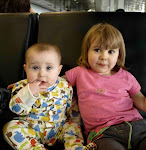The book is amazing. It’s an account of how Cortes and his gang arrived in Mexico, and what they did, written by a man who was actually there. The style is fantastic reportage, without the Renaissance flourishes you would expect, and full of bloodthirstiness.
The Mexica (as the Aztecs called themselves) were a bizarre bunch of people who particularly enjoyed human sacrifice, and the book is full of stories of sacrificial victims with their hearts ripped out and their heads being thrown down steps.
After Paul returns from church, we finally take our trip to the graveyard, which is more like an outing to the local theme park. The whole place is filled with Mexicans buying ice creams, tending graves, and playing music. Apparently it is like this every Sunday.

I have never seen an ice-cream man in a graveyard before, but nor have I seen graves of quite such complexity and colour. Most are built like little houses, so that the family can go in and contemplate photos of the dead along with flowers and children’s toys.

Because it was Day of the Dead earlier in the week, many of the graves are still covered in half eaten snacks and empty beer bottles. It appears to have been quite a party. I can’t work out whether it is healthy respect of the dead or an unhealthy obsession. Maybe it’s all part of their Aztec heritage.




















